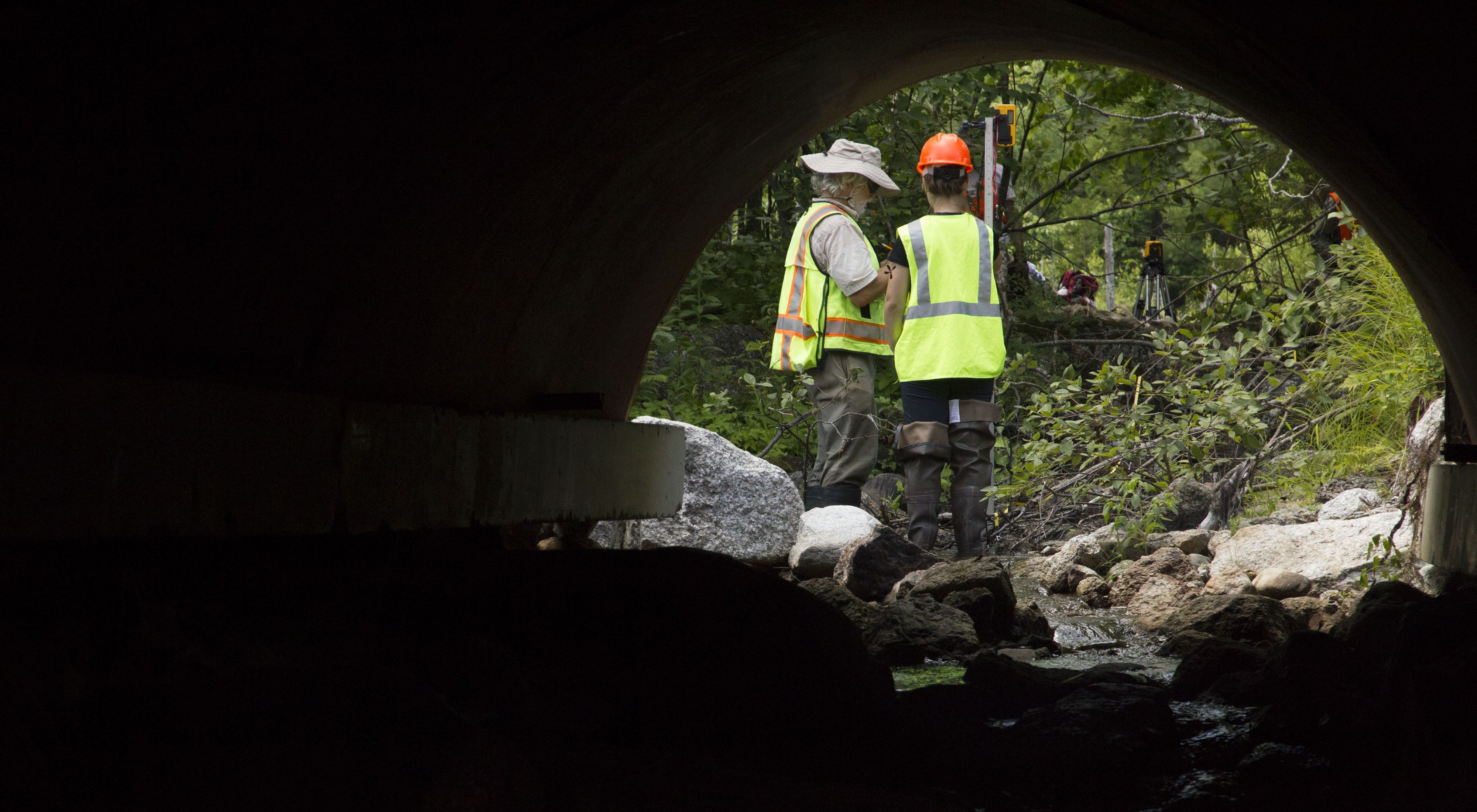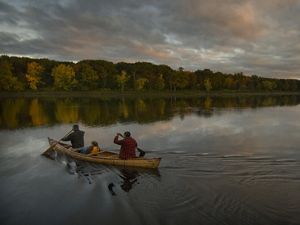Fish, Forest and Family
A program that improves roads and streams also improves people’s lives
Maine is the most forested state in the country and forms the core of the largest example of an intact temperate, deciduous-mixed forest in the Western Hemisphere. While a major driver of the state’s economy, these woodlands also provide societal benefits on which all of us rely. Forests are a massive filtration system and provide some of the highest quality stream, river, pond, and lake water found anywhere.
One day last summer, while pregnant with my second child, I was in those woods doing my job. I'm a watershed restoration specialist with The Nature Conservancy in Maine, and I work to reconnect waterways where they cross under roads, improving access for fish to quality habitat while also reducing the risk of roads washing out.
Quote: Eileen Bader Hall
Thousands of crossings all over the state prevent fish and other aquatic organisms from accessing critical habitat.
Accessing the Maine woods, whether for timber harvest or recreation, requires miles and miles of roadway infrastructure. These roads cross over streams frequently; too often, they also constrict the waterway with undersized culverts, or create waterfalls with outlets perched high above the stream bed. Thousands of crossings all over the state prevent fish and other aquatic organisms from accessing critical habitat.
Reconnecting Waterways for Fish
These barriers can be found on the land of large and small forest landowners alike. The good news is that in 2018, The Maine Aquatic Connectivity Restoration Project began. Made possible through the Regional Conservation Partnership Program (RCPP) of the Natural Resources Conservation Service (NRCS) in partnership with The Nature Conservancy, this five-year, $6 million resource is available from 2018 to 2022 and is supported by a collaboration of 26 tribal, state, federal, nonprofit and private landowners. The project covers 25,255 square miles of the state, including the last endangered Atlantic salmon-listed watersheds in the U.S. and critical Eastern brook trout habitat.
During that summer workday in the woods, I arrived at one of the northernmost project sites as the contractor and crew were preparing to replace an undersized culvert. I was greeted cheerfully by the contractor, a man I have worked with on a number of stream restoration projects.
Quote: Eileen Bader Hall
On my long drive home, I thought about those brief conversations. They had all revolved around connections to three values we all shared: fish, forest and family.

As we chatted about my child's impending birth, he shared a story about his daughter-in-law who works with his son in the logging industry. He said that she worked so long into her last pregnancy, he thought for sure his grandchild would be born in the woods.
Later in the afternoon, as we took a break in the shade, a member of the crew shared with me that he had started working with this contractor about a year ago after growing tired of driving logging trucks. Long days away from home left him little time to spend with his young daughter. Now he works locally, is home every night, and has time to take his daughter fishing on the weekends.
On my long drive home, I thought about those brief conversations. They had all revolved around connections to three values we all shared: fish, forest and family.
In many ways, that's what the Maine Aquatic Connectivity Restoration Project is all about. Reconnecting rivers and streams allows Atlantic salmon, brook trout and other species access to cool, rocky-bottom habitat. At the same time, strengthening forest roadway infrastructure benefits the forest economy, as improved road-stream crossings reduce long-term road maintenance costs and withstand increasingly volatile storm flows. The return of healthier rivers and streams and a stronger forest economy in turn benefit local communities.
Still Going Strong
We are heading into year three of the program, and the number of landowners applying for projects has increased each year. By the end of 2020, the program will have reconnected around 110 miles of streams!
As it gains more and more momentum, project partners have already begun to think through the possibilities of extending the program beyond 2022. We want to keep connecting landowners to financial and technical resources, connecting local contractors to stream restoration projects, and connecting with people over the values we all share: Fish, forest and family.
Contact Us to Get Involved
Applications from landowners are now being accepted for stream-road crossing improvement projects in 2021. Contact Eileen Bader Hall to learn about opportunities and resources that may be available to you. Phone: 207-607-4858, Email: eileen.baderhall@tnc.org.
This story appeared originally in Maine Woodlands.


